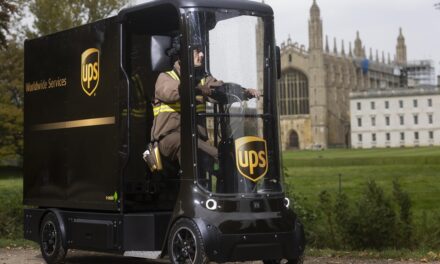
Teamsters target DHL
As it battles for a larger share of express shipping in the United States, DHL is getting the attention of more than just shippers and competitors. The express giant is facing an aggressive effort by the International Brotherhood of Teamsters union to organize the company's independent delivery workforce. Started in force late last summer, the union campaign has recruited about 1,500 employees at DHL's independent cartage contractors to the union ranks, said Rebecca Hanscom, national campaign coordinator for the DHL system at the Teamsters. That is just a fraction of the 10,000 independent delivery agents at DHL, but the union is mounting a national and grassroots campaign to recruit the balance. The objective is to recruit members at the local level, forge regional agreements and eventually press for a master contract covering all DHL employees. It is a process riddled with challenges for the union. The fundamental issues are straightforward. Hanscom says the independent contractors have salary and health and pension benefits that are "well below" those given to DHL colleagues represented by the union. The Teamsters represent about 8,900 of the company's 25,000 employees in the United States. On a larger level, the union objects to the way DHL uses what it calls indirect employees to deliver its packages. It is very different than the approaches at UPS and FedEx, Hanscom said. At UPS, the workers are direct employees of the company and "responsible to UPS for standards of service," she said. A non-union shop, FedEx "considers some of their employees to be ICCs, but they have a standard of service and operations that everyone is subject to." Hanscom claims that because the workers are not full employees, DHL cannot control its service standards. DHL strongly denies that. "We work with independent contractors that have unionized workforces and those that don't and when it comes to that relationship there are certain things that we insist on, including good service," said DHL spokesman Jonathan Baker. "But one thing we don't do is interfere with their hiring practices and whether or not their employees can become unionized." John Mullen, who recently took over DHL's leadership of the Americas, said it was up to the workers at stations to vote on union membership. "What matters is what a contract looks like at the end of the process," he said. To organize the business, the union would have to go to 420 shops with between 15 to 35 workers each, one by one across the country, said Hanscom. "That takes a lot of energy and work" for union organizing staff, said Thomas P. Krukowski, a Milwaukee attorney who has represented unions and companies in trucking labor cases. For the Teamsters, it's the latest effort to add to its ranks after losing significant union membership over the last two decades. The union also lost a tough fight at LTL carrier Overnite Transportation in recent years and has more recently mounted an organizing effort at USF Dugan, a nonunion segment of regional LTL carrier USF, which is being purchased by unionized Yellow Roadway. At Overnite, a Teamster-led walkout against the company lasted three years and ended in rout of the union with the union decertified in all of the company's facilities. At DHL, said Hanscom, some ICCs are threatening to close if the union comes in and 50 workers have been fired while trying to organize. DHL said in a statement, "As is company policy, DHL does not interfere with the internal labor issues between an independent contractor and its workforce." Since each ICC is a distinct operation, the union also must craft separate agreements with different contractors. The ICCs have different business models: in some cases, drivers own or lease their vans; in others, the company owns the vehicles, said Hanscom. Also, pay varies by region. However, "our goal is to do regional master contracts e and eventually e one master contract that covers (everyone)," said Hanscom. If it gets to the national level at DHL, the union must hammer out for competitive reasons an agreement that mirrors its UPS deal.













